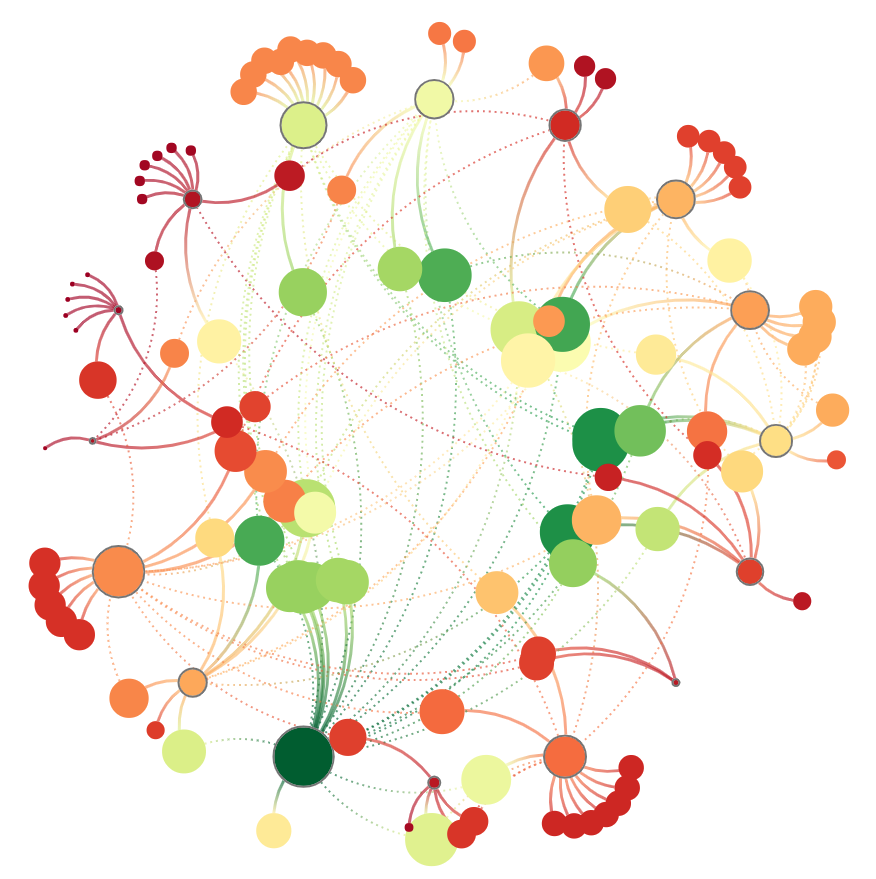Leverage Analysis in Systemic Design

Abstract
A key component of many systemic design processes is the development and analysis of systems models that represent the issue(s) at hand. In this sense, a system is a collection of interdependent social, technological, and environmental phenomena. Models of systems often take the form of Causal Loop Diagrams (CLDs—sometimes referred to as influence diagrams) in which phenomena are graphed as nodes with connections between them indicating an influencing relationship. These visual modelling techniques provide systemic designers with a mechanism for stakeholder collaboration, problem finding, and generative insight (i.e., sticky note ideation makes everyone feel heard, appears democratic, and often results in emergent themes and ideas). These functions are valorized in design thinking, and they provide real value in garnering momentum and achieving common mental models in complex problems. They give systemic designers powerful resources for use in visual argument.
However, while we believe these tools are useful, we also believe their true potential is unfulfilled. The properties of complex systems (and of how people engage with them) present a number of issues that introduce bias and chance into this process (Norman & Stappers, 2015). Given a model, systemic designers work through what they observe and interpret, engage in dialogue about what is important, and look for patterns (one category of which is archetypes, in which phenomena following certain patterns tend to produce similar emergent behaviours; Braun, 2002). While some principles and processes exist (cf. Jones, 2014), identifying leverage points and designing solutions tends to happen by “muddling through” a problem. This means solutions are developed and implemented in opportunistic form, through satisficing rather than optimizing (Norman & Stappers, 2015; see also Simon, 2008, chapter 2). Thus, we find a critical value gap: models are used in visual argument, but they could be used to augment those very arguments founded on evidence and logical relationship analysis.
We propose the application of semi-quantitative analytics to systemic design models to go beyond visual argument, offering a powerful toolkit for:
Comprehensive system mapping for complex sociotechnical systems (including the development of reference models that can inform synthesis/Gigamaps, or that can be used as their own arguments);
Network-based analysis to uncover key structures, relationships, and latent leverage positions of modelled phenomena;
Analytical mapping of problem systems and sorting out multicausality;
A toolkit for cross-impact analysis between problematiques; and
A “reality check” on strategic foresight proposals (by mapping temporal changes in networks and problematiques, we can better predict signal → trend outcomes).
We argue that visual models may be rethought in terms of the logics of leverage to reconcile this value gap. We propose the introduction (or at least renewed emphasis) of centrality analysis (metrics derived from social network analysis, evaluating the relative importance of mapped phenomena through measuring the structure of the directed graph made by the phenomena) and decomposition heuristics (algorithms derived from systems dynamics that analyze the directed graph structure to reveal the causal and loop hierarchy of modelled systems) in systemic design.
To demonstrate these concepts, Le Blanc’s (2015) model of the Sustainable Development Goals (SDGs) as a network of targets was reconstructed. We ran centrality metrics on the reconstructed model to reveal potential indicators (via closeness analysis) and leverage points (via eigenvector analysis) of change. Then, to explore the applicability of structural analysis on systems models, we constructed a loop inclusion graph of the systems model used in Ryan’s education systemics project. The loop inclusion graph reveals the dominance of a central loop in the model.
The resolution of this value gap is particularly important as we see growth in the use of systemic design—and the technologies that support its practice. In order to develop models of systems that accurately represent the many stakeholders involved in the system, systemic designers must draw on diverse sources to collect and organize as much data as possible (Jones, 2014; Stroh, 2015). Fortunately, thanks to the development of recent technologies and practices such as crowdsourcing (the development of participatory systems that involve publics in a collaborative project, usually directed by a project owner; Lukyanenko & Parsons, 2012) and data science (a set of techniques and theories that help distill insight from data; cf. Scepanovic, 2018), the collection and organization of large amounts of data will become ever easier.
This brings us to an important paradox. Larger, more complex, data-driven models are likely more representative, as they capture more perspectives and nuances than simpler models. At the same time, larger, more complex models are harder to learn and understand (Rossi & Brinkkemper, 1996), and therefore they are also harder to use in the development of solutions. Thus, the tools we propose come at a crucial moment for leverage analysis in systemic design. Their advancement and provisioning could elevate the potential of the tools at the core of the discipline. With this careful rethinking of the logics of leverage, we might make better arguments for change, finding the place to stand from which to move the world.
References
Archimedes. (2018, January 11). Retrieved March 31, 2018, from https://en.wikiquote.org/wiki/Archimedes
Jones, P. H. (2014). Systemic Design Principles for Complex Social Systems. In G. S. Metcalf (Ed.), Social Systems and Design (pp. 91–128). Springer Japan. https://doi.org/10.1007/978-4-431-54478-4_4 Lukyanenko, R., & Parsons, J. (2012). Conceptual modeling principles for crowdsourcing (pp. 3–6). ACM. https://doi.org/10.1145/2390034.2390038
Le Blanc, D. (2015). Towards integration at last? The sustainable development goals as a network of targets. Sustainable Development, 23(3), 176–187.
Norman, D. A., & Stappers, P. J. (2015). DesignX: Complex Sociotechnical Systems. She Ji: The Journal of Design, Economics, and Innovation, 1(2), 83–106. https://doi.org/10.1016/j.sheji.2016.01.002
Ozbekhan, H. (1970). The predicament of mankind: A quest for structured responses to growing world-wide complexities and uncertainties (Original Proposal to the Club of Rome). Geneva, Switzerland: The Club of Rome. Retrieved from http://quergeist.net/Christakis/predicament.pdf
Rossi, M., & Brinkkemper, S. (1996). Complexity Metrics for Systems Development Methods and Techniques. Information Systems, 21(2), 209–227.
Scepanovic, S. (2018). Data science for sociotechnical systems - from computational sociolinguistics to the smart grid.
Aalto University. Retrieved from https://aaltodoc.aalto.fi:443/handle/123456789/30187 Simon, H. A. (1996). The sciences of the artificial (3. ed., [Nachdr.]). Cambridge, Mass.: MIT Press.
Stroh, D. P. (2015). Systems Thinking For Social Change: A Practical Guide to Solving Complex Problems, Avoiding Unintended Consequences, and Achieving Lasting Results. Chelsea Green Publishing.
Tzetzes, J., & Kiessling, G. (1826). Iōannou tou Tzetzou Biblion historikēs tēs dia stichōn politikōn, Alpha de kaloumenēs. F.C.G. Vogel.

